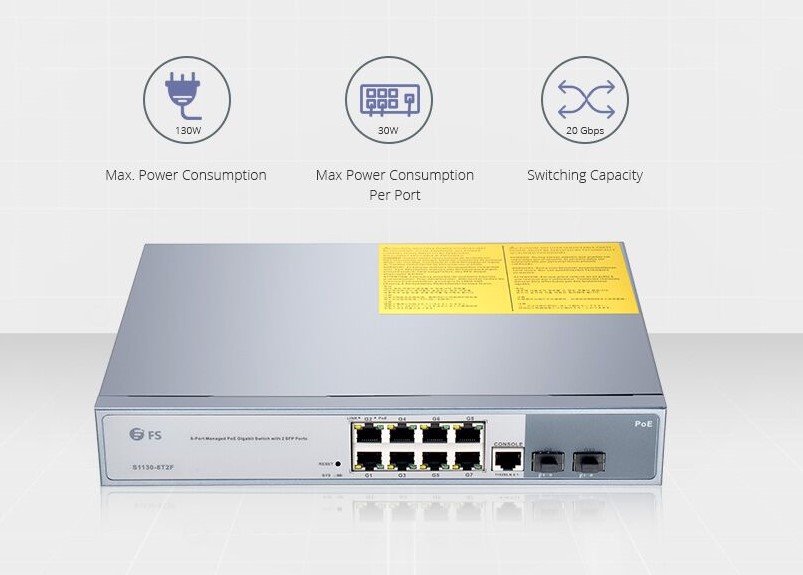If you want to buy two 8-port network switch rather than one single 16-port switch just because of tight budget, it’s a wise choice. Then how to choose 8-port switches? Here I want to recommend 8 port poe switch. Poe is a term refers to Power Over Ethernet which is a technology that lets network cables carry electrical power. With poe switch, we can push power and data further than ever before. Now I want to introduce you TL-SG1008PE and S1130-8T2F 8 port poe switch.
TL-SG1008PE 8-Port Gigabit PoE Switch
TP-LINK TL-SG1008PE is a 8-port 10/100/1000Base-T gigabit Ethernet unmanaged switch. It has a total power budget of 124w and up to 30w per port. It also supports IEEE 802.3x flow control for full duplex mode and backpressure for half duplex mode, internal power supply. Moreover, the TL-SG1008PE can save at most 75% of the power consumption with help of innovative energy-efficient technology. TL-SG1008PE is easy to install and use. It requires no configuration and installation. With desktop/Rack mount design, outstanding performance and quality, the TP-LINK TL-SG1008PE 8-Port Gigabit Desktop/Rack mount Switch with 8-Port PoE is a great selection for expanding your home or office network.
S1130-8T2F 8-port PoE Managed Switch
FS.COM S1130-8T2F 8-port PoE managed switch comes with 8 10/100/1000Base-T RJ45 Ethernet ports, 1 console port, and 2 gigabit SFP slots of which the transmission distance can be up to 120 km. This switch is designed fanless, which provides silent and reliable operation. It supplies power to network equipment such as weather-proof IP cameras with windshield wiper and heater, high-performance AP and IP telephone. With high resistance to electromagnetic interference, it also features superior performance in stability, environmental adaptability.
TL-SG1008PE VS S1130-8T2F 8 Port PoE Switch
Both the two switches are 8-port poe switches. They have the port priority function which will help protect the system if the system power becomes overloaded. There are some differences between them, as one is managed switch and the other is unmanaged .
The key difference between a managed and unmanaged switch is the capability to configure the switch and to prioritize LAN traffic to ensure that the most important information gets through.
Managed switches present you more management over your LAN traffic and offer advanced features to control that traffic.
An unmanaged switch simply allows Ethernet devices to “talk to” one another, such as a PC or network printer, and those are typically what we call “plug and play.” They are shipped with a fixed configuration and do not allow any changes to this configuration.
Managed switches contain all the features of an unmanaged switch and provide the ability to configure, manage, and monitor your LAN. And this gives you greater control over how data travels over the network and who has access to it.
Conclusion
When it comes to long cable runs and cameras installed far away from the data source, nothing is more disappointing than losing the signal transmission. FS.COM power-over-Ethernet switches are designed to make installations simple, powerful, and effective. Come and contact us.

